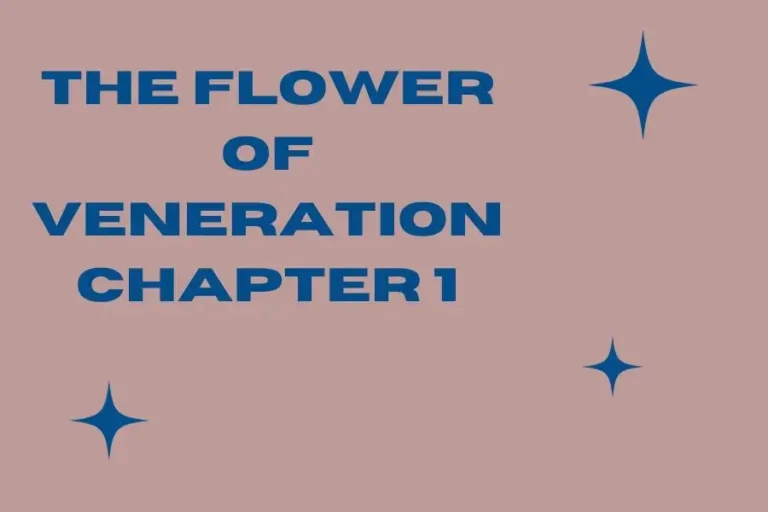Exploring the Timeless Charm of Antiquità: A Journey into Italy’s Cultural Tapestry

As you wander through the enchanting streets of Rome, Florence, or Venice, you might see the word ‘antiquità’ adorning the windows of quaint shops, promising an exploration through time and culture. Beyond a mere reference to antiques, antiquità encapsulates a profound cultural appreciation for beauty, history, and craftsmanship. This article delves into the rich tapestry of Italian antiquità, going beyond surface details to unveil the more profound significance of this unique art form.
Unraveling Antiquità: Beyond Mere Objects
Antiquità, fundamentally, encompasses artifacts, architectural details, decorative objects, and furnishings rooted in classical antiquity—primarily ancient Greece, Rome, and Egypt. Beyond being relics of the past, these historical treasures are revered for their artistic brilliance, meticulous craftsmanship, and the embodiment of cultural values spanning millennia.
The allure of antiquità lies in its aesthetic charm and its portrayal of an idealized past. The harmonious proportions, naturalistic forms, and skilled rendering of materials in ancient art continue to inspire contemporary artists and designers. For enthusiasts, antiquità is a symbolic bridge between the present day and a distant yet influential past.
However, this intimate connection with history through antiquità is not without its challenges. The trade-in of looted or forged antiquities on the black market has prompted stringent regulations. Reputable dealerships and auction houses now meticulously verify an item’s provenance before it enters the market, ensuring that authentic antiquità finds its way to genuine collectors and cultural institutions.
Whether housed in museums or private collections, antiquità provides a window into long-vanished societies’ aesthetics and material culture. These remnants of bygone eras continue to shape contemporary notions of beauty, value, and cultural identity, echoing whispers of a glorious past.
Antiquità’s Genesis: A Journey Through Time
Antiquità’s Ancient Roots The term ‘antiquità’ finds its linguistic origin in ancient Roman culture, derived from the Latin word ‘antiquus,’ meaning old. However, it wasn’t until the Renaissance that there was a resurgence of interest in ancient Roman and Greek culture. This cultural Renaissance laid the foundation for appreciating antiquità—ancient art, artifacts, and ruins.
The Grand Tour and Collection of Antiquità The 17th and 18th centuries witnessed the emergence of the ‘Grand Tour,’ a cultural phenomenon that exposed young European elites to Italy’s renowned antiquities. This expedition allowed them to see iconic antiquities like the Colosseum and Pantheon firsthand. Collecting small antiquità became a trend, contributing to the rise of the antiquità trade and the subsequent influence on Neoclassical art and design.
The Antiquità Trade Dealers in antiquità, known as antiquari, played a pivotal role in the trade. They sourced artifacts from ancient sites or crafted replicas to cater to the growing demand from Grand Tour travelers and collectors. This trade evolved into a lucrative industry, with antiquari establishing shops across Italy, particularly in Rome and Florence.
Influence on Neoclassical Art and Design Exposure to antiquità during the Grand Tour and through trade profoundly influenced art, architecture, and design. The Neoclassical style emerged, incorporating elements from ancient Greek and Roman antiquità. This influence permeated various art forms, from furniture to fashion, echoing the simplicity, symmetry, and grandeur of antiquità.
Antiquità’s journey from ancient Rome to the Renaissance and beyond showcases its cultural evolution and enduring influence on artistic expression.
Craftsmanship Unveiled: Key Characteristics and Styles of Antiquità Pieces
Key Characteristics of Antiquità Furniture Antiquità furniture is a testament to artistic and historical significance. Several defining characteristics contribute to the allure of this style:
Decorative Motifs and Ornate Carvings: Inspired by Greek, Roman, and Renaissance art, antiquità furniture often features motifs like acanthus leaves, scrolls, shells, and mythological figures. The level of detail and craftsmanship in woodcarvings is unparalleled.
Exotic Hardwoods: Crafted from rare, exotic hardwoods such as mahogany, rosewood, and ebony, these pieces exude a dark, dramatic appearance. Techniques like ebonizing, gilding, and fruitwood staining enhance the wood grains.
Classic Shapes: Antiquità furniture adheres to classic shapes, including tables, cabinets, desks, and seating with turned legs and claw feet. The proportions are formal, grand, and plentiful, with popular features like winged armchairs, marble tabletops, and tapestry upholstery.
Masterful Craftsmanship: Master artisans employed traditional joinery techniques like dovetailing, mortise and tenon, and veneering. High-quality materials and exceptional artistry resulted in heirloom-quality pieces that have stood the test of time.
Major Styles Within Antiquità Furniture The period from the 16th to the 19th centuries witnessed the emergence of several distinct styles within antiquità furniture:
Baroque (1600-1750): Characterized by ornate, dramatic styles with heavy carvings, gilding, and upholstery.
Rococo (1700-1770): A whimsical, asymmetrical style featuring curved lines, gilded carvings, and pastel upholstery, popular in France and Italy.
Neoclassical (1760-1830): Marked by a return to simple, symmetrical forms inspired by ancient Greek and Roman design, gaining popularity after the French Revolution.
Empire (1800-1815): A grand, militaristic style inspired by Napoleon’s campaigns, featuring Egyptian and Etruscan motifs, mahogany, and bronze mounts.
Victorian (1837-1901): A revival of historic styles like Gothic, Renaissance, and Rococo, blended with exotic inspirations from the British Empire. Furniture characterized by dark, heavily carved designs and rich upholstery.
Understanding the historical context, characteristics, and significant styles of antiquità furniture enriches the appreciation of these masterpieces.
The Maestros Behind the Masterpieces: Notable Antiquità Artists Through the Ages
Antiquità art owes much of its grandeur to the brilliance of influential artists across different epochs. Some of the most celebrated antiquità artists and their iconic works include:
Leonardo da Vinci (1452-1519): Renowned for masterpieces like ‘The Last Supper’ and ‘Mona Lisa,’ da Vinci’s work exemplifies the High Renaissance style, contributing significantly to the popularity of antiquità.
Michelangelo (1475-1564): A polymath of the High Renaissance, Michelangelo’s sculptural masterpieces like ‘David’ and ‘Pietà’ are quintessential examples of antiquità.
Raphael (1483-1520): A master painter and architect, Raphael’s stylized and graceful paintings, including ‘The School of Athens’ and ‘Transfiguration,’ helped define the classical antiquità style of the Renaissance.
Caravaggio (1571-1610): A Baroque painter renowned for his use of chiaroscuro, Caravaggio’s works like ‘Bacchus’ and ‘Boy with a Basket of Fruit’ played a pivotal role in Baroque painting.
Rembrandt (1606-1669): A leading figure in the Dutch Golden Age, Rembrandt’s emotive Baroque style is evident in works like ‘Storm on the Sea of Galilee’ and ‘Self-Portrait with Two Circles.’
These artistic maestros, each leaving an indelible mark on their respective periods, continue to captivate audiences with their timeless creations.
Nurturing a Collection: Where to Discover Authentic Antiquità Works
Knowing where to find authentic pieces is crucial for those aspiring to build an antiquità collection or enhance an existing one. Here are some prime locations to embark on this journey:
Art Galleries Numerous art galleries specialize in antiquità, mainly focusing on European art from the 14th to 19th centuries. These galleries boast experts capable of accurately assessing the pieces’ age, origin, and value.
Additionally, they often employ restoration experts who can address any damage or imperfections, ensuring the preservation of high-quality antiquità pieces. While prices may lean towards the premium side, the assurance of authenticity and preservation justifies the investment.
Auction Houses Prominent auction houses such as Sotheby’s, Christie’s, and Bonhams regularly host auctions featuring antiquità, both live and online. Auctions provide a unique opportunity to discover rare and distinctive items that may not be available elsewhere. However, participating in auctions requires meticulous research, setting maximum bid prices, and relying on visual descriptions, as physical inspections are often not feasible.
Antique Dealers Brick-and-mortar antique stores and antique malls house a variety of vendors offering a diverse range of antiquità and vintage goods. This avenue caters to budget-conscious buyers seeking affordable decorative items and serious collectors searching for high-end, investment-worthy pieces.
The advantage of shopping with antique dealers lies in physically inspecting items, negotiating prices, and establishing relationships with trustworthy dealers. While the process may involve exploring multiple stores for the best selection and quality, the hands-on experience is invaluable.
Estate sales occur when individuals downsize, or estates are liquidated, presenting an opportunity to uncover antiquità treasures among household goods. Prices at estate sales are often reasonable, making it an attractive option for collectors. However, the selection varies significantly from sale to purchase, and successful finds require dedication, early attendance, and a willingness to compete with other buyers.
By approaching the quest for antiquità with patience, persistence, and discernment, enthusiasts can assemble impressive collections through these diverse sourcing avenues. Diligent research, setting budgets, and the readiness to walk away from seemingly enticing deals are essential steps toward acquiring authentic, high-quality antiquità pieces.
A Tapestry of Time: Concluding the Antiquità Journey
The journey through the world of Italian antiquità unravels a tapestry of cultural richness and historical depth. From its linguistic roots in ancient Rome to the Renaissance revival, the Grand Tour era, and the subsequent influence on Neoclassical art and design, antiquità is a testament to Italy’s enduring artistic heritage.
Beyond mere remnants of the past, antiquità beckons a profound appreciation for craftsmanship, cultural heritage, and a deep reverence for history. Whether incorporated into one’s surroundings through acquisitions or admired from afar, antiquità extends an invitation to a design style that has withstood centuries.
The patina of age inherent in antiquità becomes a poignant reminder of the beauty found in imperfections, celebrating an ongoing history that echoes through time. Antiquità, in its essence, awakens the senses to the simple pleasures of the worn, the weathered, and the well-loved.
No extensive travels are required to immerse oneself in the world of antiquità; a mindful gaze upon the beauty and wonder encapsulated in everyday objects is all it takes. The journey through Italian antiquità becomes an intimate dialogue with history, where every piece tells a story, and every acquisition becomes a cherished chapter in a broader narrative.
Frequently Asked Questions
What does the term ‘antiquità’ signify in Italian culture?
Italian culture’s term’ antiquità’ encompasses artifacts, architectural details, decorative objects, and furnishings from classical antiquity. It goes beyond mere historical relics, embodying a deep cultural appreciation for beauty, history, and craftsmanship, reflecting Italy’s artistic heritage.
How did the Grand Tour contribute to the popularity of antiquità?
The Grand Tour, a cultural phenomenon in the 17th and 18th centuries, exposed young European elites to Italy’s renowned antiquities. This direct encounter fueled a trend of collecting small antiquità, contributing to the rise of the antiquità trade and influencing Neoclassical art and design.
What are the defining characteristics of antiquità furniture?
Antiquità furniture is characterized by decorative motifs and intricate carvings inspired by Greek, Roman, and Renaissance art. These pieces are crafted from rare, exotic hardwoods and feature a dark, dramatic appearance. Classic shapes, meticulous craftsmanship, and adherence to traditional joinery techniques contribute to the allure of antiquità furniture.
Who are some notable antiquità artists throughout history?
Prominent artists such as Leonardo da Vinci, Michelangelo, Raphael, Caravaggio, and Rembrandt played pivotal roles in shaping antiquità art. Their masterpieces, spanning the High Renaissance and Baroque periods, continue to be celebrated for their influence on European art.
Where can one discover and collect authentic antiquità works?
Authentic antiquità can be found in art galleries specializing in European art, major auction houses like Sotheby’s and Christie’s, brick-and-mortar antique stores, antique malls, and estate sales. Each venue offers unique opportunities for enthusiasts to source and build their antiquità collections.
What is the significance of antiquità beyond its aesthetic appeal?
Antiquità transcends mere aesthetic appeal, fostering a deep connection with history, craftsmanship, and cultural heritage. Incorporating antiquità into one’s surroundings initiates a dialogue with the past, celebrating imperfections and embracing the enduring beauty of the worn, weathered, and well-loved.
You can also know about 2023-1954 by going through that blog.






